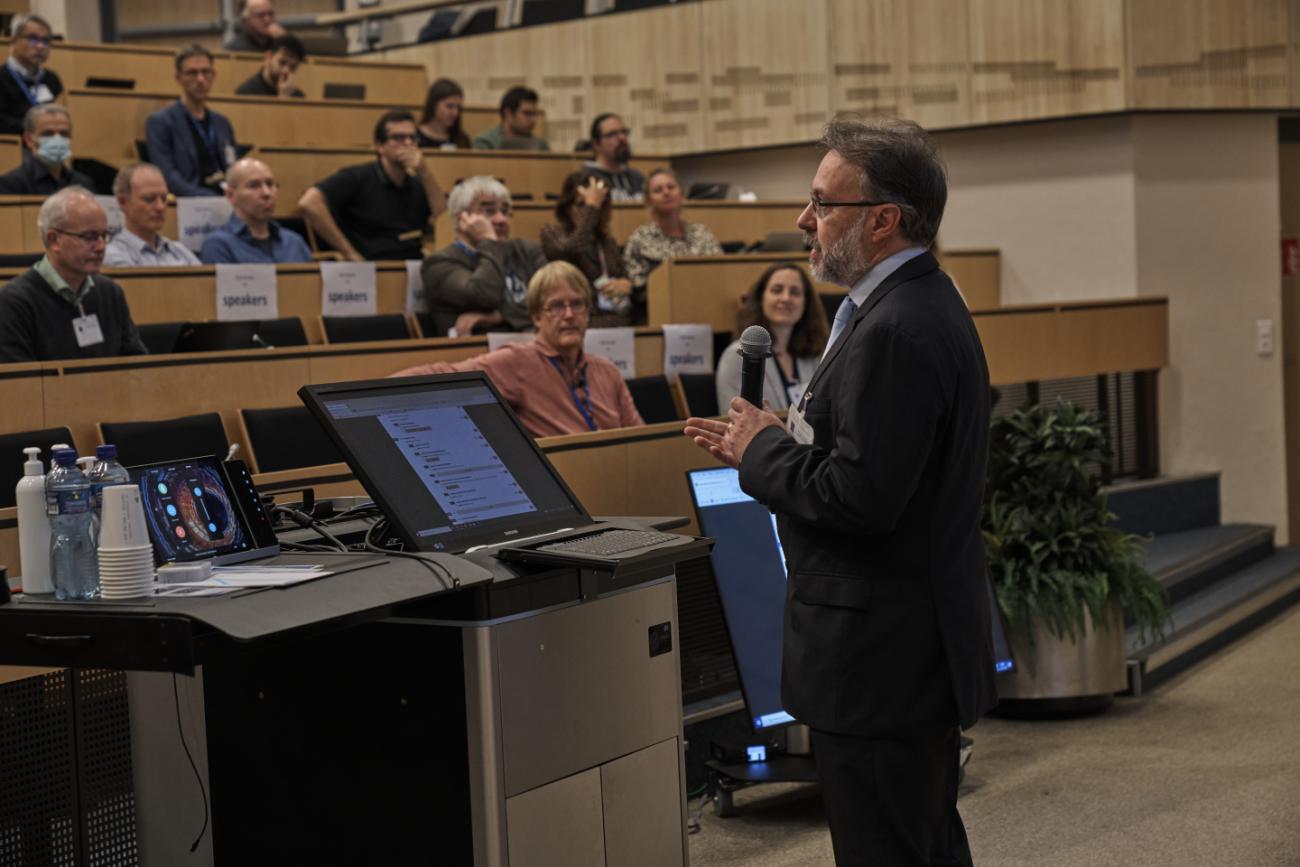Last week, on 1–4 November, the first International Conference on Quantum Technologies for High-Energy Physics (QT4HEP) was held at CERN. 224 people attended in person, with more following online. The event brought together members of the quantum technologies community from research and industry. They discussed recent developments in the field and worked to identify activities within particle physics – and other sciences – that can most benefit from the application of quantum technologies.
The conference was opened by Joachim Mnich, CERN Director for Research and Computing. “CERN is widely recognised, including by our Member States, as an important platform for promoting applications of quantum technologies –both for particle physics and beyond,” says Mnich. “The journey has just begun and the road is still long, but it is sure that deep collaboration between physicists and computing experts will be key to capitalising on the full potential of quantum technologies.” He continues: “Given the nature of its research and the technologies it develops, CERN – with its tradition of diverse collaboration – is ideally placed to support this.”
The conference was organised by the CERN Quantum Technology Initiative (CERN QTI), a comprehensive R&D and knowledge-sharing initiative to investigate applications of quantum technologies for particle physics and beyond. It follows a successful workshop on quantum computing in 2018 that marked the beginning of a range of new investigations into quantum technologies at CERN. The conference was also supported by CERN openlab and was sponsored by Google, IBM and Intel.
“Building on CERN’s collaborative culture and proven track record of developing breakthrough technologies, CERN QTI provides a platform for innovation,” says Alberto Di Meglio, head of CERN QTI and CERN openlab. “This ambitious conference is a vital tool in helping us to build bridges between research communities and with industry, share knowledge, and collate input that will shape the future of CERN QTI.”
CERN QTI covers four main research areas: quantum theory and simulation; quantum sensing, metrology and materials; quantum computing and algorithms; and quantum communication and networks. The first day’s sessions at the conference focused on the first two of these areas, with talks from representatives of leading research institutes discussing topics such as quantum simulation of neutrino oscillations, scaling up atomic interferometers for the detection of dark matter, and the application of quantum traps and clocks to searches for new physics.
The second day’s sessions focused on the remaining two areas, with talks on topics such as quantum machine learning, noise gates for quantum computing, the journey towards a quantum internet, and much more. Other highlights on this day were presentations of the European Union’s programmes for quantum technologies and an overview of the path to quantum computers exceeding the capabilities of classical ones.
The third day’s sessions – organised in collaboration with CERN’s Knowledge Transfer group – were primarily dedicated to industrial co-development. Industry and academia representatives reviewed success stories from industry–academia collaboration and identified new opportunities for co-development. The end of the day was dedicated to education, training and outreach initiatives, with Google having provided financial support for 11 students to attend the conference. The conference featured a poster competition that saw three posters from DESY scoring highly, along with posters on quantum computing applications at LHCb, IBM quantum platforms and noisy quantum gates. The third day of the conference also featured a presentation on the recently announced Open Quantum Institute.
The fourth and final day of the conference was dedicated to hands-on workshops with three different quantum computing providers.
Read the summaries of the first day’s, second day’s and third day’s sessions on the CERN QTI website, and watch the recordings on the conference website.
-- Andrew Purcell

